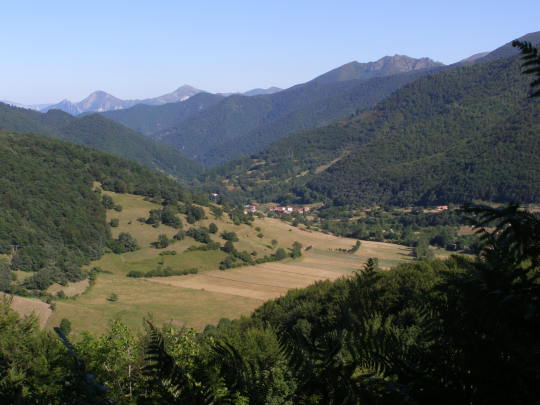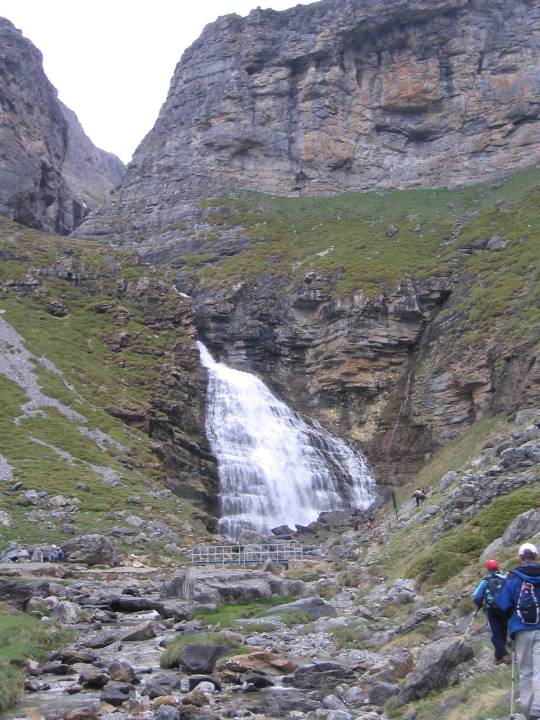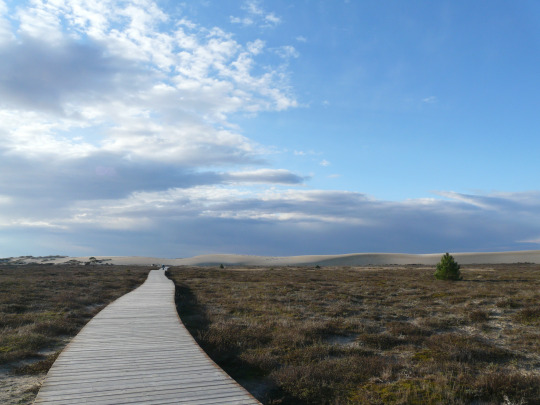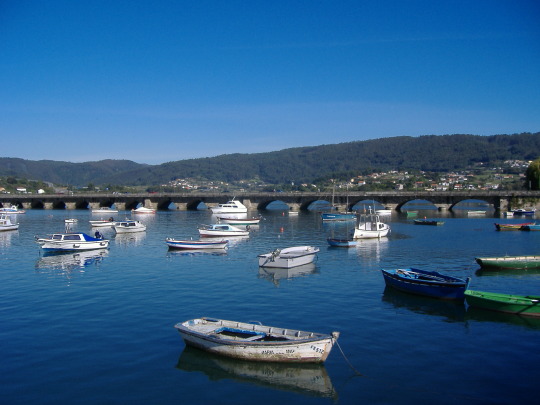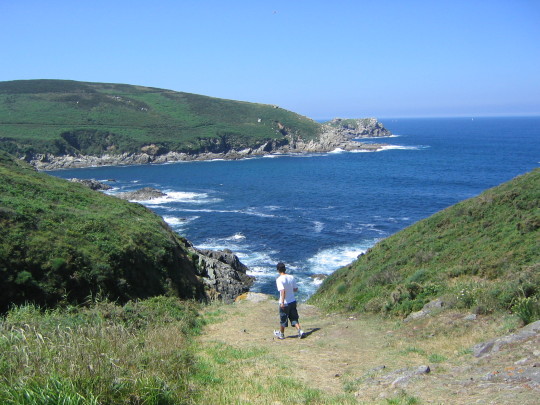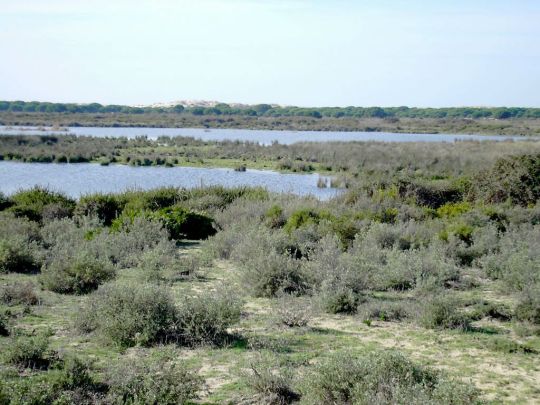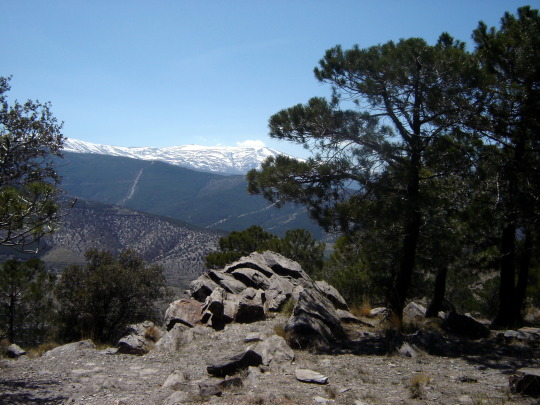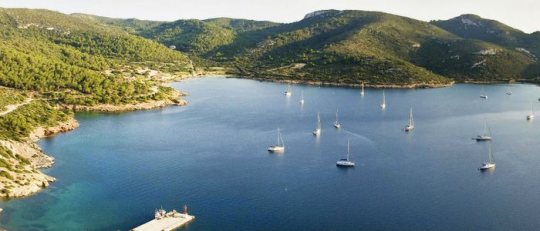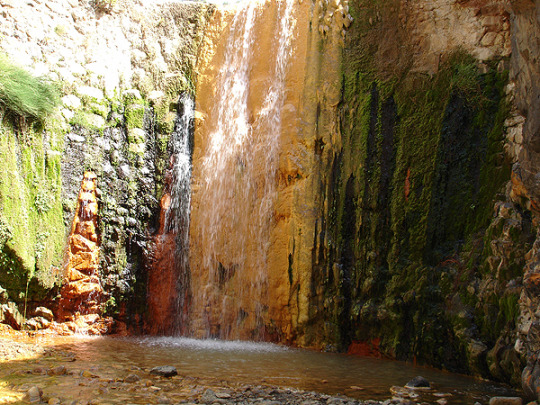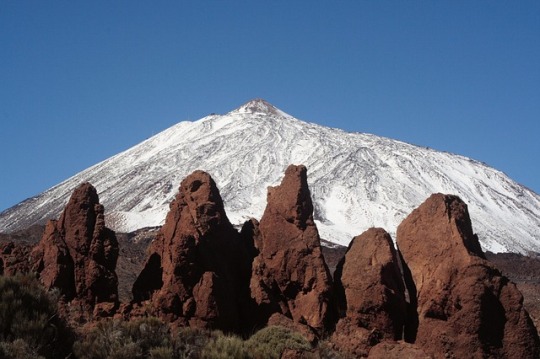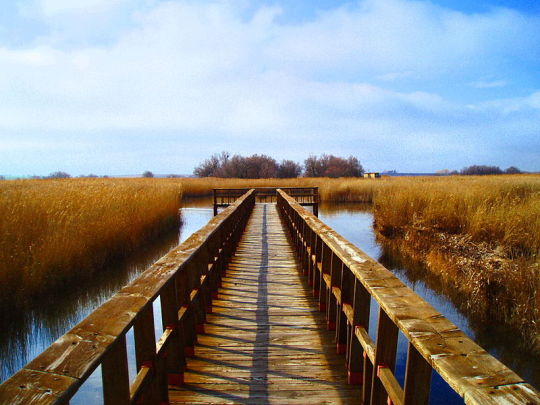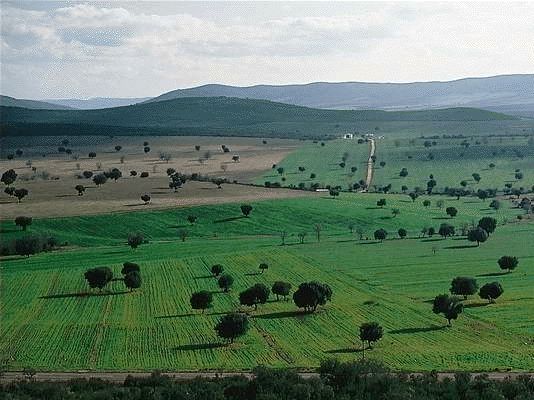One of the pleasures of travelling around Spain is to visit a village or town and find the flags flying, a band playing and the inhabitants enjoying a party atmosphere because the township is commemorating some saint or other with a fiesta. In fact, as you read this, it is highly probable that some place in Spain is partying. Everywhere, from the tiniest barrio to the biggest city, the people enjoy fiestas - lots of them!
Usually the local Saint provides the reason to celebrate. However, any excuse for a party will do whether it is to commemorate some local hero, to celebrate a good harvest, or to recreate a Moors versus Christians battle!
Semana Santa
Usually the local Saint provides the reason to celebrate. However, any excuse for a party will do whether it is to commemorate some local hero, to celebrate a good harvest, or to recreate a Moors versus Christians battle!
Semana Santa
There are the celebrations that occur throughout the country, and elsewhere for that matter, like Semana Santa (Holy Week), when hooded penitents carry religious floats through the streets in an extremely dramatic style. These celebrations take place all over Spain but the Andalucian cities of Sevilla, Córdoba, Granada, Málaga and Almería have the most spectacular celebrations.
Navidad
 |
| a Semana Santa procession in Astorga, Spain - public domain |
There is Christmas, of course, which is a big event in Spain and which officially starts on December 8th - the public holiday of the Feast of the Immaculate Conception. Spanish Christmas, or Navidad, stretches all the way to Kings Day on January 6. Noche Buena (Christmas Eve) is very quiet by Spanish standards as families spend the night indoors. They consume great quantities of food, however, and the adults exchange gifts. Children have to wait until Kings Day - or at least they used to. These days, they are spoilt and so they receive gifts on Christmas Eve as well.
On the 6th January, the Spanish commemorate Día de Reyes, Kings Day, which celebrates the day on which the Three Wise Men arrived in Bethlehem bringing gifts for baby Jesus. Every town and city in Spain enjoys parades during the evening of the 5th January.
 |
| Christmas decorations in a Spanish shopping mall © Robert Bovington |
On the 6th January, the Spanish commemorate Día de Reyes, Kings Day, which celebrates the day on which the Three Wise Men arrived in Bethlehem bringing gifts for baby Jesus. Every town and city in Spain enjoys parades during the evening of the 5th January.
Other important fiestas
Other important fiestas celebrated throughout Spain include Corpus Christi, All Saints Day, the Feast of St John, New Year's Eve, the Day of the Innocents and Carnaval.
Corpus Christi is another religious celebration, and is a solemn affair especially in Toledo where a dramatic procession takes place. However, in Ponteareas in the province of Pontevedra, brightly coloured flower petals carpet the streets where the procession makes its way. In La Orotava in Tenerife, the townsfolk go further by making carpets of flowers and creating works of art from the coloured volcanic sands.
The Spanish commemorate 'Todos los Santos' on October 31. On this 'All Saints' day, the Spanish visit cemeteries and put flowers on the graves of relatives and friends.
On the night of San Juan, 23 June, the people of Spain commemorate the Summer Solstice by lighting bonfires and fireworks. The celebrations are of pagan origin. One of the rituals is to leap over the fires, which allegedly brings good luck for the rest of the year.
Noche Vieja or New Years Eve is celebrated in Spain with the ceremony of the grapes - the New Year is welcomed in by eating one grape on each chime of the clock, which is meant to bring good luck.
Sandwiched between Christmas and New Year is the 'Día de los Inocentes'. On 28 December, the Spanish have the opportunity of playing tricks on people because this particular day is the equivalent to April Fool's Day.
Other important fiestas celebrated throughout Spain include Corpus Christi, All Saints Day, the Feast of St John, New Year's Eve, the Day of the Innocents and Carnaval.
Corpus Christi is another religious celebration, and is a solemn affair especially in Toledo where a dramatic procession takes place. However, in Ponteareas in the province of Pontevedra, brightly coloured flower petals carpet the streets where the procession makes its way. In La Orotava in Tenerife, the townsfolk go further by making carpets of flowers and creating works of art from the coloured volcanic sands.
The Spanish commemorate 'Todos los Santos' on October 31. On this 'All Saints' day, the Spanish visit cemeteries and put flowers on the graves of relatives and friends.
On the night of San Juan, 23 June, the people of Spain commemorate the Summer Solstice by lighting bonfires and fireworks. The celebrations are of pagan origin. One of the rituals is to leap over the fires, which allegedly brings good luck for the rest of the year.
Noche Vieja or New Years Eve is celebrated in Spain with the ceremony of the grapes - the New Year is welcomed in by eating one grape on each chime of the clock, which is meant to bring good luck.
Sandwiched between Christmas and New Year is the 'Día de los Inocentes'. On 28 December, the Spanish have the opportunity of playing tricks on people because this particular day is the equivalent to April Fool's Day.
Carnaval
During the week before Lent, carnivals are enjoyed all over Spain. The best places to experience the colourful spectacle of 'Carnaval' are Santa Cruz de Tenerife, Sitges and Cádiz. Santa Cruz de Tenerife is the place to see 'queens'! The Carnival Queen is elected from the prettiest of the teenage girls in the city but there is also a procession of 'drag queens'! The Sitges Carnival is another colourful spectacle and the most important in Catalonia. It consists of folk dancing and eating xatonades, the local speciality of salad and omelettes.
Cádiz is probably the best place to experience 'Carnaval'. Everyone wears a costume, which is usually related to some political event. In some places the carnival is celebrated in bizarre ways - in Bielsa, in the province of Huesca, some of the population wear rams' horns on their heads, black their faces and wear teeth made of potatoes! It is meant to represent some pagan fertility rite. Whilst in Madrid and Benidorm a strange ceremony takes place - the funeral of the sardine!
San Fermin
Some of the most famous fiestas are the San Fermin festival, the Fallas of Valencia, the Moors and Christians fiestas and Madrid's San Isidro festival.
In the novel "The Sun Also Rises", Ernest Hemingway described the San Fermin festival. It is one of Spain's most celebrated fiestas. It is also one of the most dangerous. Thousands of either brave or stupid people run with the bulls through the cobbled streets of Pamplona. On the last night of the week long fiesta, those who are not in hospital or in a coffin sing Basque songs in the main square.
Other famous festivals
One of the biggest and most spectacular street festivals takes place in Valencia in March each year - Las Fallas. Huge papier-mâché effigies are burnt to the ground.
The Moors and Christians fiestas take place all over Spain. Ceremonies and mock battles are staged to commemorate the Reconquest.
The largest bullfight festival is in Madrid around May 15 each year. The Madrileños celebrate the festival of San Isidro, the patron saint of peasants and of the city. Of course, there are also fireworks and food as well as concerts and cultural pursuits.
On October 12 the Spanish celebrate Día de la Hispanidad, which is sometimes called Columbus Day. It is to commiserate - sorry - commemorate Columbus discovering America.
Feria de Abril de Sevilla
There are many other notable festivals. The Feria de Abril is Sevilla's stylish festival where the townsfolk dress in elegant costumes. If they are not on horseback or in horse-drawn carriages, the citizens and visitors can be found in the hundreds of marquees eating tapas, drinking manzanilla or dancing sevillanas. All the big cities have spectacular fiestas including Barcelona whose biggest festival, the Festes de la Merce, occurs every September. Zaragoza's big day is the Día del Pilar. Ronda hosts the Corrida Goyesca, an annual festival of music, dancing and bullfights.
Pilgrimages
On the last Sunday in April, the people of Andújar, in the province of Jaén, take part in the Romería de Andújar - a mass pilgrimage to the shrine of the Virgen de la Cabeza. An even bigger pilgrimage is the Romería del Rocío, which takes place every May/June. Up to one million people travel on foot or by horse and carriage to the shrine of the Virgin at the village of El Rocío in Huelva province.
The most famous pilgrimage is the Camino de Santiago - the Way of Saint James. This road traverses some of Spain's most spectacular landscapes and ends at Santiago de Compostela in Galicia province. People from all over Europe make the annual pilgrimage. On July 25, St James's Day, is the Fiesta de Santiago and fireworks light the night sky of the holy city on the eve of this festival.
Still on a religious note, The misteri d'Elx, a passion play, is staged on the 14th and 15th August in the World Heritage city of Elche.
Floral crosses decorate the streets of Granada and Córdoba in May. Neighbourhoods compete to create the most colourful crosses. Córdoba continues its floral celebrations with its annual Fiesta de los Patios. The inhabitants of old Córdoba open their patios to the public and display their floral arrangements.
There are many celebrations relevant to sea-faring folk - like Día de la Virgen on July 16. Fishermen at Almuñécar on the Costa Tropical carry a statue of the Virgen de Carmen on their boats.
At Sanlucar de Barrameda in the province of Cádiz, horse races take place on the beach every August to celebrate the Exaltacion al Rio Guadalquivir.
St George's Day
One of the most charming Spanish, or should I say Catalonian, traditions takes place on April 23, St George's Day. On that day, men give women roses and the ladies give their man a book. The custom is to celebrate Catalonia's patron saint and to commemorate 'World Book Day' - on 23 April 1616 both Shakespeare and Cervantes died. April 23 was also Shakespeare's birthday so no wonder the day is important in literary circles!
Strange Festivals
Some of Spain's celebrations can be crazy, macabre or downright messy! In the village of Buñol, in the land of Valenciana, the World's biggest tomato fight takes place. Thousands of revellers hurl ripe tomatoes at each other. At Haro, the capital of the Rioja Alta wine region, a wine battle takes place every 29 June - People dressed in white clothes squirt each other with wine.
Every 23 June, at San Pedro Manrique in Soria province, men walk barefoot over burning embers. They do this whilst carrying people on their backs!
There are always fireworks at Spanish fiesta time but some, like the Valencian Fallas, really set the place alight. Like Los Escobazos held every December in Jarandilla in the province of Cáceres. The villagers light bonfires in the streets and then set fire to brooms, which they use to whack friends and relatives.
Dampening things down a bit, the villagers of Agaete in Gran Canaria beg for rain in a ceremony that takes place on the night of July 4.
At Verges in Gerona province, a Dance of Death takes place on Maundy Thursday. Men dressed as skeletons perform a macabre dance. Another dance occurs in Anguiano in the province of La Rioja - this time on stilts! The extra tall dancers wear yellow skirts and fancy waistcoats and hurtle down the stepped alley from the church to the main square. This is to celebrate the Danza de los Zancos fiesta.
In Castillo de Murcia in Burgos, babies, dressed in their Sunday best, are laid on mattresses in the street and a colourfully dressed man jumps over them - apparently to free them from illness!
There are many more quirky fiestas in Spain and seeing their men folk forming human towers, having flour fights or dressing themselves up as soldiers, scarecrows or animals, you would be forgiven for thinking that women might want to add some sanity to proceedings and run things themselves! On St Agatha's Day, 5 February, they do - well, in Zamarramala in Segovia province anyway! The inhabitants celebrate the patron saint of married women by electing two women as mayoresses to run the village for the day. There is also a ceremony where a stuffed figure representing a man is set ablaze.
Food and Wine Celebrations
Great quantities of food are consumed at fiestas and in Valencia, giant pans of paella feed the revellers. Celebration of food and wine are also the reasons for some fiestas. There is the Tapas Fair in Sevilla, sherry tasting at Jerez de la Frontera´s Fiestas de Otoño and a seafood festival at O Grove in the province of Pontevedra. In the Asturias they celebrate the famous stew of the region, fabada Asturiana and another stew party is held at Vendrell on the Costa Dorada. Many towns and villages celebrate the olive harvest and an Olive Feast takes place at Mora in the province of Toledo. Eels are eaten at La Fiesta de la Angula in San Juan de la Arena in the Asturias and in that region, there are beans and cider fairs in the Asturian coastal villages. Even the exotic spice of saffron is celebrated - the Saffron Rose Festival is held in Toledo every October and, on a less delicate note, there are the annual pig slaughters, which take place all over Spain - usually on St Martin´s Day, November 11 - La Matanza signals the start of the wintertime drying of hams and sausages. It is especially celebrated in the mountain villages of Andalucía.
There are popular drink festivals too. At Catalonia's Cava fiesta, visitors can drink the famous sparkling wine. At the Fiestas de Otoño, the autumn festival in Jerez, sherry can be sampled. Revellers can taste cider at Asturian fiestas and quaff the excellent Rioja wine at the Fiesta de San Mateo in Logroño.
Film, music and dance
There are numerous festivals of film, music, dance and theatre. Granada hosts an International Music and Dance Festival. The streets around the Alhambra are filled with musicians and flamenco dancers and the sounds of guitars and the click of castanets fill the air. Other famous festivals include the International Music Festival of Barcelona, the Madrid Autumn Festival and the San Sebastian International Film Festival. That city in the Basque country also hosts the annual San Sebastian Jazz Festival.
Mérida in the province of Badajoz has a rich Roman heritage and what better place to watch plays and operas than in a Roman theatre. The Festival of Classical Theatre is held there every July and August.
Guitar and flamenco aficionados should make their way to Córdoba in July for the Festival de Córdoba, an International guitar festival that takes place in the gardens of the Alcazar, whilst Spain´s best flamenco singers and dancers appear at the Jerez Flamenco Festival. The town is also the venue of the Feria del Caballo, a horse fair held every year in May.
Saints
There are thousands more fiestas in Spain including many religious festivals that celebrate a town's patron saint - not just solemn religious parades but singing, dancing, eating, drinking, bullfights and fireworks!
Everyday of the Spanish Calendar is a Saint Day; there are actually more than 365 Saints! Many Spanish people are named after the day they were born so many people born on March 19 are called José. Some people are named after the patron saint of the town in which they were born so there are lots of women called Pilar in Zaragoza. Every Saint is celebrated at some time during the year somewhere in Spain - even San Blas the patron saint of sore throats!
Spain would be much poorer in every sense if there were no fiestas. They are a symbol of the Spanish people - colourful, vibrant, usually extremely noisy and great fun!
There are many other notable festivals. The Feria de Abril is Sevilla's stylish festival where the townsfolk dress in elegant costumes. If they are not on horseback or in horse-drawn carriages, the citizens and visitors can be found in the hundreds of marquees eating tapas, drinking manzanilla or dancing sevillanas. All the big cities have spectacular fiestas including Barcelona whose biggest festival, the Festes de la Merce, occurs every September. Zaragoza's big day is the Día del Pilar. Ronda hosts the Corrida Goyesca, an annual festival of music, dancing and bullfights.
Pilgrimages
On the last Sunday in April, the people of Andújar, in the province of Jaén, take part in the Romería de Andújar - a mass pilgrimage to the shrine of the Virgen de la Cabeza. An even bigger pilgrimage is the Romería del Rocío, which takes place every May/June. Up to one million people travel on foot or by horse and carriage to the shrine of the Virgin at the village of El Rocío in Huelva province.
The most famous pilgrimage is the Camino de Santiago - the Way of Saint James. This road traverses some of Spain's most spectacular landscapes and ends at Santiago de Compostela in Galicia province. People from all over Europe make the annual pilgrimage. On July 25, St James's Day, is the Fiesta de Santiago and fireworks light the night sky of the holy city on the eve of this festival.
Still on a religious note, The misteri d'Elx, a passion play, is staged on the 14th and 15th August in the World Heritage city of Elche.
Floral crosses decorate the streets of Granada and Córdoba in May. Neighbourhoods compete to create the most colourful crosses. Córdoba continues its floral celebrations with its annual Fiesta de los Patios. The inhabitants of old Córdoba open their patios to the public and display their floral arrangements.
There are many celebrations relevant to sea-faring folk - like Día de la Virgen on July 16. Fishermen at Almuñécar on the Costa Tropical carry a statue of the Virgen de Carmen on their boats.
At Sanlucar de Barrameda in the province of Cádiz, horse races take place on the beach every August to celebrate the Exaltacion al Rio Guadalquivir.
St George's Day
One of the most charming Spanish, or should I say Catalonian, traditions takes place on April 23, St George's Day. On that day, men give women roses and the ladies give their man a book. The custom is to celebrate Catalonia's patron saint and to commemorate 'World Book Day' - on 23 April 1616 both Shakespeare and Cervantes died. April 23 was also Shakespeare's birthday so no wonder the day is important in literary circles!
Strange Festivals
Some of Spain's celebrations can be crazy, macabre or downright messy! In the village of Buñol, in the land of Valenciana, the World's biggest tomato fight takes place. Thousands of revellers hurl ripe tomatoes at each other. At Haro, the capital of the Rioja Alta wine region, a wine battle takes place every 29 June - People dressed in white clothes squirt each other with wine.
Every 23 June, at San Pedro Manrique in Soria province, men walk barefoot over burning embers. They do this whilst carrying people on their backs!
There are always fireworks at Spanish fiesta time but some, like the Valencian Fallas, really set the place alight. Like Los Escobazos held every December in Jarandilla in the province of Cáceres. The villagers light bonfires in the streets and then set fire to brooms, which they use to whack friends and relatives.
Dampening things down a bit, the villagers of Agaete in Gran Canaria beg for rain in a ceremony that takes place on the night of July 4.
At Verges in Gerona province, a Dance of Death takes place on Maundy Thursday. Men dressed as skeletons perform a macabre dance. Another dance occurs in Anguiano in the province of La Rioja - this time on stilts! The extra tall dancers wear yellow skirts and fancy waistcoats and hurtle down the stepped alley from the church to the main square. This is to celebrate the Danza de los Zancos fiesta.
In Castillo de Murcia in Burgos, babies, dressed in their Sunday best, are laid on mattresses in the street and a colourfully dressed man jumps over them - apparently to free them from illness!
There are many more quirky fiestas in Spain and seeing their men folk forming human towers, having flour fights or dressing themselves up as soldiers, scarecrows or animals, you would be forgiven for thinking that women might want to add some sanity to proceedings and run things themselves! On St Agatha's Day, 5 February, they do - well, in Zamarramala in Segovia province anyway! The inhabitants celebrate the patron saint of married women by electing two women as mayoresses to run the village for the day. There is also a ceremony where a stuffed figure representing a man is set ablaze.
Food and Wine Celebrations
Great quantities of food are consumed at fiestas and in Valencia, giant pans of paella feed the revellers. Celebration of food and wine are also the reasons for some fiestas. There is the Tapas Fair in Sevilla, sherry tasting at Jerez de la Frontera´s Fiestas de Otoño and a seafood festival at O Grove in the province of Pontevedra. In the Asturias they celebrate the famous stew of the region, fabada Asturiana and another stew party is held at Vendrell on the Costa Dorada. Many towns and villages celebrate the olive harvest and an Olive Feast takes place at Mora in the province of Toledo. Eels are eaten at La Fiesta de la Angula in San Juan de la Arena in the Asturias and in that region, there are beans and cider fairs in the Asturian coastal villages. Even the exotic spice of saffron is celebrated - the Saffron Rose Festival is held in Toledo every October and, on a less delicate note, there are the annual pig slaughters, which take place all over Spain - usually on St Martin´s Day, November 11 - La Matanza signals the start of the wintertime drying of hams and sausages. It is especially celebrated in the mountain villages of Andalucía.
There are popular drink festivals too. At Catalonia's Cava fiesta, visitors can drink the famous sparkling wine. At the Fiestas de Otoño, the autumn festival in Jerez, sherry can be sampled. Revellers can taste cider at Asturian fiestas and quaff the excellent Rioja wine at the Fiesta de San Mateo in Logroño.
Film, music and dance
There are numerous festivals of film, music, dance and theatre. Granada hosts an International Music and Dance Festival. The streets around the Alhambra are filled with musicians and flamenco dancers and the sounds of guitars and the click of castanets fill the air. Other famous festivals include the International Music Festival of Barcelona, the Madrid Autumn Festival and the San Sebastian International Film Festival. That city in the Basque country also hosts the annual San Sebastian Jazz Festival.
Mérida in the province of Badajoz has a rich Roman heritage and what better place to watch plays and operas than in a Roman theatre. The Festival of Classical Theatre is held there every July and August.
Guitar and flamenco aficionados should make their way to Córdoba in July for the Festival de Córdoba, an International guitar festival that takes place in the gardens of the Alcazar, whilst Spain´s best flamenco singers and dancers appear at the Jerez Flamenco Festival. The town is also the venue of the Feria del Caballo, a horse fair held every year in May.
Saints
There are thousands more fiestas in Spain including many religious festivals that celebrate a town's patron saint - not just solemn religious parades but singing, dancing, eating, drinking, bullfights and fireworks!
Everyday of the Spanish Calendar is a Saint Day; there are actually more than 365 Saints! Many Spanish people are named after the day they were born so many people born on March 19 are called José. Some people are named after the patron saint of the town in which they were born so there are lots of women called Pilar in Zaragoza. Every Saint is celebrated at some time during the year somewhere in Spain - even San Blas the patron saint of sore throats!
Spain would be much poorer in every sense if there were no fiestas. They are a symbol of the Spanish people - colourful, vibrant, usually extremely noisy and great fun!
.JPG) |
| fiesta in Ugíjar, Alpujarras © Robert Bovington |
"Photographs of Spain"
| |
"postcards from Spain"
| |
"you couldn't make it up!"
| |
"a grumpy old man in Spain"
| |
"bits and bobs"
| |
"Spanish Expressions"
| |
"Spanish Art"
| |
"Books About Spain"
|
















